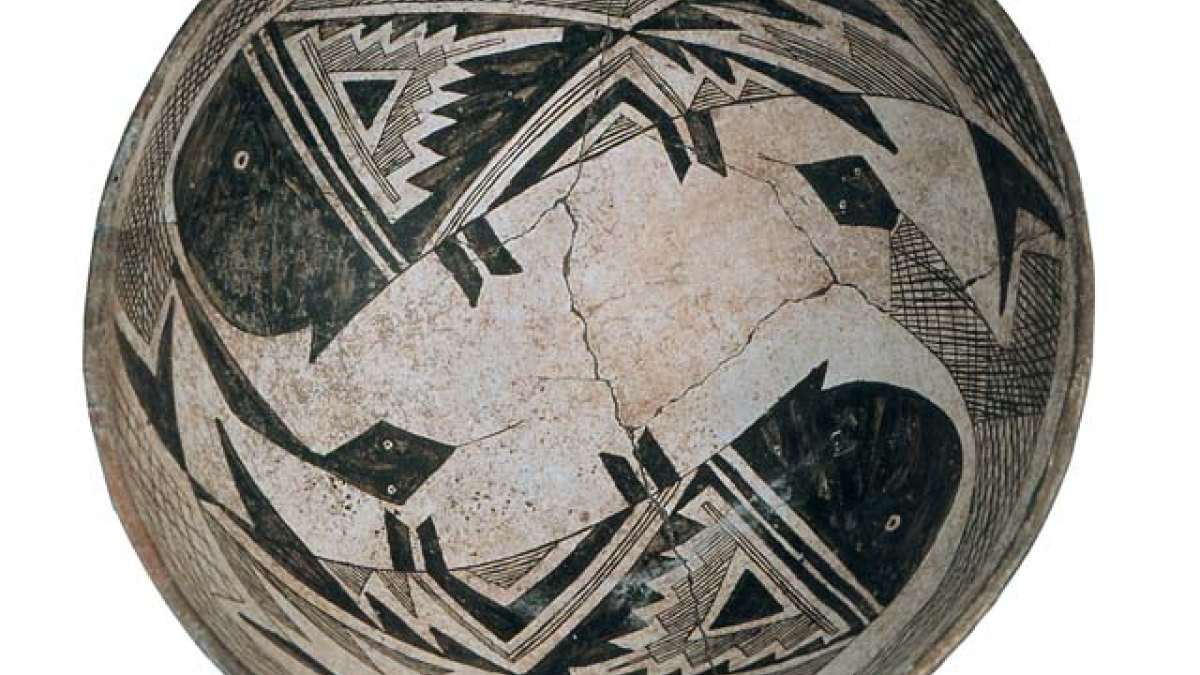Significant ancient pottery collection goes online

Mimbres pottery is one of the most treasured prehistoric ceramic traditions of North America. Named for the valley in southwestern New Mexico where its creators flourished around a thousand years ago, the striking black-on-white vessels are highly prized on the art market.
The bowls, which usually bear human or animal figures, are spread over the world in various museums and private collections, making it impossible for researchers – or simply interested individuals – to easily access the bulk of this work.
Until now.
Earlier this year, the Mimbres Pottery Images Digital Database (MimPIDD) debuted as part of the Digital Archaeological Record (tDAR).
The online collection brings together nearly 10,000 images of ceramic vessels (almost all known Mimbres black-on-white pottery) and makes them instantly accessible via the tDAR site. Data on each vessel’s form, size and design, as well as its archaeological context and temporal style, are also included. The information has been gleaned from more than 70 private collections and 80 archaeological sites.
With headquarters on Arizona State University’s Tempe campus, tDAR is an international repository for digital archaeological records. Part of the multi-institutional entity known as Digital Antiquity, it has been endorsed by the American Anthropological Association and the Society for American Archaeology. Through tDAR, users can tap images, GIS files, data sets and other data from archaeological projects around the globe.
MimPIDD exemplifies the mission of tDAR by providing a treasure trove of archaeological records to everyone from professional anthropologists to students, while also preserving those records in perpetuity.
The high-tech database is a far cry from MimPIDD’s origins. For many years, the most comprehensive repository of this information was compiled by Steven LeBlanc, who traveled around the country, beginning in the 1970s, photographing and taking notes on known Mimbres pots, whether in private or public collections.
LeBlanc, now curator at Harvard University’s Peabody Museum, was so thorough that what resulted was an avalanche of slides and notecards that needed to be processed before any real research could be done on the material.
Together with ASU professor and Mimbres specialist Michelle Hegmon, LeBlanc determined that the records needed to be entered into a searchable electronic database.
They set about conceptualizing MimPIDD and Hegmon secured funding from the Turner Foundation, allowing execution of their plan.
After researching their options, Hegmon and LeBlanc teamed with tDAR to host the cache of online Mimbres material.
“Now that the collection has been transferred into a database, analysis can begin,” explains Hegmon, a professor in the School of Human Evolution and Social Change in the College of Liberal Arts and Sciences. “We can start asking the big questions, like what are the cultural and political issues surrounding the production of these pots, and what were the distribution patterns?”
Vestiges of the Mimbres culture, considered a branch of the Mogollon culture, are often found on ranch land, such as the area near Truth or Consequences, where ASU operates an archaeology field school.
Hegmon says that ranchers and landowners have typically been good about allowing archaeologists to investigate the ruins on their property. However, looting has been a major problem over the years, and looters have become increasingly aggressive and careless, even bulldozing entire archaeological sites to get at Mimbres bowls. Preservation is paramount and MimPIDD is proving to be part of the solution.
The undergraduate Southwest Archaeology (ASB 335) class, now taught online, includes an exercise in which students do an analysis of pottery designs by accessing the MimPIDD records through tDAR. The students’ experiences will help Hegmon and tDAR staff refine the search features of the database while providing the students with an opportunity to become familiar with Mimbres pottery and the increasingly valuable archaeological tool of tDAR.